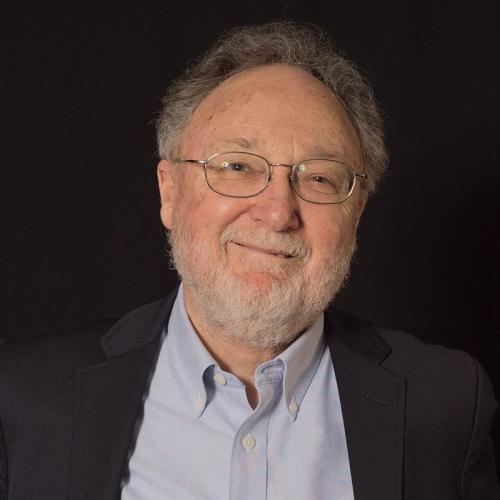David Larbalestier, the chief materials scientist at the Florida State University-headquartered National High Magnetic Field Laboratory and a Krafft Professor in the Department of Mechanical Engineering at the FAMU-FSU College of Engineering, has been elected a Fellow of the Royal Academy of Engineering.

David Larbalestier, the chief materials scientist at the Florida State University-headquartered National High Magnetic Field Laboratory and a Krafft Professor in the Department of Mechanical Engineering at the FAMU-FSU College of Engineering.
Larbalestier was cited for his “seminal work in high current, high field superconducting materials for over 50 years.” A native of the United Kingdom, he joins 49 of his compatriots in this year’s group of Fellows, along with three International Fellows. The Royal Academy is the U.K.’s national academy for engineering and technology, dedicated to advancing and promoting excellence in engineering for the benefit of society.
Larbalestier has accrued numerous honors over his career, most of which has been spent stateside. But this one, he said, feels different.
“There’s no question that there’s something special about being honored by the academy of the land of your birth,” Larbalestier said.
Throughout his career, Larbalestier has pushed the envelope on superconductor technologies. Superconductors are materials that conduct electricity with perfect efficiency. Unlike copper, in which energy is lost through the friction of the moving electrons, superconductors allow electrons to flow unimpeded, under the right (and typically extremely cold) conditions.
Over the decades, he has played a leading role in developing early superconductors like niobium tin and niobium titanium, helped to transfer that technology to medical and scientific use in MRI machines, nuclear magnetic resonance instruments and particle accelerators, and has constantly improved the performance of those materials.
In the 1980s, the first high-temperature superconductors (HTS) were discovered, compounds that perform at higher, more practical temperatures but presented their own challenges in terms of wire production. In fact, no magnets of any utility were made with HTS wire for two decades. However, the National MagLab believed in their potential and in 2006 invited the Applied Superconductivity Center (ASC), then based at the University of Wisconsin-Madison and directed by Larbalestier, to join the lab and FSU.
Since then, he has led partnerships that have driven HTS materials to magnetic fields twice as high as any possible with niobium tin. This work culminated in the 32-tesla magnet, the world’s strongest superconducting magnet. Designed and built at the National MagLab and slated to open for experiments later this year, it features the HTS conductor YBCO (yttrium barium copper oxide).
Another world-record magnet that Larbalestier shepherded into being is the world’s strongest continuous field magnet. In 2017, this test magnet generated a field of 45.5 teslas using the superconductor known as REBCO (rare earth barium copper oxide) and a novel “no insulation” design. The article reporting the achievement, one of 12 papers Larbalestier has published in the prestigious journal Nature, was among the most highly cited science articles of 2019. In all, Larbalestier’s 490 publications have received more than 17,000 citations.
“From superconducting materials to magnet technologies to international partnerships, David has been the engine behind many prestigious firsts at the MagLab,” said Greg Boebinger, director of the National MagLab. “He fully deserves to be the first FSU faculty member elected to the Royal Academy.”
The new honor pairs nicely with Larbalestier’s 2003 election as a Fellow of the National Academy of Engineering in the U.S., noted J. Murray Gibson, dean of the FAMU-FSU College of Engineering.
“David Larbalestier is a world-leading materials engineer who we are fortunate to have as a member of the FAMU-FSU Department of Mechanical Engineering,” Gibson said. “David’s work to develop real applications for superconducting wires has changed the world.”
After earning his doctorate in materials engineering at Imperial College London, Larbalestier launched his career at the Superconducting Magnet Research Group at Rutherford Laboratory in the U.K., where he developed multifilamentary niobium tin conductors and magnets. In 1976, he moved to the U.S. to become a faculty member at UW-Madison, where he taught in the Department of Materials Science and Engineering and the Department of Physics and joined the ASC, rising to director in 1990. He continued as director through 2018.
Since his early days in superconductivity, when he began collaborations with the magnet manufacturer Oxford Instruments that have flourished ever since, industry partnerships have been a hallmark of Larbalestier’s career. The MagLab has always supported that synergy as ASC research has helped advance more powerful, more efficient magnets from hospital MRIs to the Large Hadron Collider to the National MagLab’s own research magnets.
“It’s the ability of the MagLab to do both science and great technology that I’m very pleased to see celebrated in the Royal Academy’s citation,” said Larbalestier, who has also actively promoted collaborations with other national laboratories and university groups.
Many other honors have preceded this most recent distinction. Larbalestier has been awarded prizes from the Institute of Electrical and Electronics Engineers (IEEE) and the Council for Chemical Research; was given a Lifetime Achievement Award by the International Cryogenic Materials Conference; and was the Distinguished Lecturer at an IEEE Council on Superconductivity. He is a Fellow of the American Physical Society, the Institute of Physics (U.K.), the National Academy of Inventors, the IEEE, the Materials Research Society and the American Association for the Advancement of Science.
Among his many other professional duties, Larbalestier has served as a member of the U.S. Department of Energy’s High Energy Physics Advisory Panel and the National Materials and Manufacturing Board of the National Research Council.
Established in 1976, the Royal Academy of Engineering brings together eminent and distinguished members of all disciplines to promote engineering excellence for the benefit of society. There are currently 1,645 Fellows (including Emeritus, International and Honorary), drawn half from industry and half from academia.
